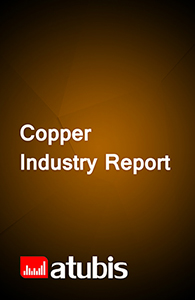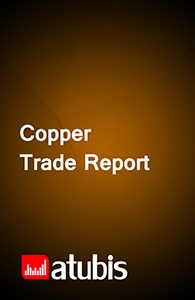Iran’s Telecom Wire and Cable Market Outlook Report
9,821€
- TRY: 475,000 ₺
Telecom wires and cables include not only those with copper conductors, but also optical fiber as well as a combination of both. Telecom wires and cables are used to send and receive data signals, where speed is particularly important. Thus, the structure of the cables varies depending on their applications in general use and military telecom systems. Copper conductor or optical fiber is used in these cables to transfer data. Coaxial cables have metal conductors and shields that not only reduce electromagnetic noise, but also contribute to data transfer.
Product Description
With a GDP of $415 billion in 2019, Iran was the third largest economy in the region that year. While the country’s economy was steadily growing after the drop in 2012 due to the sanctions, it dipped once again in 2019 thanks to the return of the sanctions. Copper is one of the main raw materials used in the wire and cable industry; about 75% of the global copper output is used to produce wires and cables. While a major portion of copper use in telecom wires and cables has been replaced by optical fiber, the red metal still holds part of the market share. Thus, the availability of copper can drive supply in the telecom wire and cable market. Due to its rich copper reserves, Iran is the largest copper producer in the region; in 2019, the country was ranked the sixth largest in terms of copper reserves and the fifteenth largest copper producer in the world. But considering the capacity being built in the country, the rank in copper production can improve.
Market drivers of Iran’s telecom wires and cables
Currently, despite relative development in Iran’s telecom network, as small cities expand and the population grows, further development is still needed. Telecom systems in Iran, especially those related to the internet, have had significant growth over the past two decades. As telecom demand is forecast to increase, the industry is also expected to expand along with demand growth.
Wireless technologies have rapidly grown around the world; they have also had a good penetration rate in Iran. Public telephones have mostly been replaced by wireless telecom equipment such as mobile phones. Internet networks have also expanded considerably and part of the country’s internet infrastructure relies on wireless technologies. As the costs related to building and setting up wireless technologies have decreased, the growth potential for these technologies in telecom systems and networks is expected to be strong. However, there are restrictions, such as the lower speed of wireless networks relative to traditional wired ones as well as the sanctions.
Overview of Iran’s telecom wire and cable market
The production of telecom wires and cables in Iran has grown significantly over the past years; the country, once a net importer, has now turned into a net exporter. Due to the abundant availability of copper in the country, telecom wires and cables are mostly produced from copper. However, as demand for copper wires and cables in the telecom sector weakens and imports of optical fiber alternatives increase, many producers are taking measures to catch up to the trend by producing optical fiber cables instead of copper ones. Since raw materials for optical fiber cables are mostly imported, production is not expected to increase significantly with exports in mind. Thus, Iran’s trade balance is not likely to change much over the coming years.
Breakdown of Iran’s telecom wire and cable market
Iran’s telecom wire and cable market is broken down using three factors. In the first breakdown, telecom wires and cables are analyzed in terms of conductor type: copper and optical fiber. Telecom wires and cables are also categorized as coaxial cables, twisted pairs, optical fiber, and other types. Finally, a distinction is made based on end users, including telecom, infrastructure, and construction.
Key players in Iran’s telecom wire and cable market
- Shahid Ghandi Copper Company
- Kerman and Kavian Cable Industries
- Abhar Cable
- Alborz Cable
- SIMCO Cable
- Zarsim
Additional Information
| Industry | Wire and cable |
|---|---|
| Region | Iran |
| Report Type | Industry Report |
Specifications
| Report Attribute | Details |
| The base year for estimation | 2021 |
| Historical data | 2011-2020 |
| Forecast period | 2021-2026 |
| Quantitative units | Value in USD and Volume in Tonne |
| Report coverage | Market Overview, Dynamics, Market Outlook, Risks to Forecast, Consumer Market, Industry Overview, Market Landscape, Competitive Landscape, Market Attractiveness, External Macro Environment Analysis |
| Segments covered | Composition, Type, Application |
| Pricing and purchase options | Please explore our purchase options to meet your exact research needs. |
Reasons to Buy
- Recognize the geographical distribution of import demand
- Identify the current and future key players of the trading market
- Achieve a better insight on potential target markets
- Understand the behavior of major suppliers/customers either globally or regionally
- Identify competitors as a feed for market analysis
Table of Content
1- Executive summary
2- Introduction
2-1- Objective
2-2- Market under study
2-3- Product
2-3-1- Product specifications
2-3-2- Consumption structure
2-3-2-1- Applications
2-4- Physical properties
2-5- Subjects discussed
2-6- Geographical scope under study
2-7- Study timeframe
2-8- Study currency
2-9- Potential audience
3- Market dynamics
3-1- Market drivers
3-2- Restraints
3-3- Opportunities
3-4- Challenges
4- Market overview
4-1- Market size
4-2- Industry capacities
4-2-1- Existing capacities
4-2-1-1- Capacity distribution
4-2-1-2- Geographical distribution of capacities
4-2-2- Future capacities
4-3- Output
4-3-1- Output trends
4-3-2- Operating rates
4-4- Consumption
4-4-1- Consumption trend
4-4-2- Consumption Share of domestic product
4-5- Trade
4-5-1- Exports
4-5-2- Imports
4-5-3- Trade balance
4-5-4- Market balance
4-6- Market breakdown by product type
4-7- Market breakdown by product type
4-8- Market breakdown by application
4-9- Inventory
4-9-1- Producers inventory
4-9-2- Consumers inventory
4-9-3- Traders inventory
5- Market outlook
5-1- Market factors
5-1-1- Raw materials
5-1-2- Costs and prices
5-1-3- Competition
5-1-4- The government
5-1-5- Other factors
5-2- Future scenarios
5-3- Risks to forecast
6- Consumer markets
6-1- End-user markets
6-1-1- Building construction
6-1-2- Infrastructure construction
6-1-3- Transportation manufacturing
6-1-4- Industrial equipment manufacturing
6-1-5- Durable goods manufacturing
6-1-6- Consumable goods manufacturing
6-2- Direct consumer markets
6-2-1- Major Direct consumers
6-2-1-1- Existing capacities
6-2-1-2- Drivers
7- Export potentials
7-1- Destinations
7-1-1- Trade and insurance costs
7-1-2- Import market suppliers
7-1-3- Producers potential share
8- Industry overview
8-1- Raw materials
8-1-1- The supply volume of raw materials
8-1-2- Supply channels of raw materials
8-1-3- Raw materials procurement costs
8-2- Cost structure of producers
8-3- Production cost curve
8-4- Industry value added
8-5- Generated new scrap
8-6- Technology
9- Market landscape
9-1- Domestic sales markets
9-1-1- Pricing in the domestic market
9-1-2- Potential domestic demand
9-1-3- Trade agreements for imports
9-1-4- Foreign suppliers
9-2- Foreign sales market
9-2-1- Prices
9-2-2- Potential markets overview
9-2-3- Trade agreements for exports
9-2-4- Foreign customers
10- Competitive landscape
10-1- Producers
10-1-1-1- Company profile
10-1-1-2- Revenue structure
10-1-1-3- Gross profit margins
10-1-1-4- Capacity, output and sales
10-2- Consumers
10-2-1-1- Company profile
10-2-1-2- Revenue structure
10-2-1-3- Gross profit margins
10-2-1-4- Capacity, output and sales
11- Market attractiveness
11-1- Industry rivalry
11-2- Threat of new entrants
11-3- Threat of substitutes
11-4- Bargaining power of buyers
11-5- Bargaining power of suppliers
11-6- Conclusion of Porter analysis
12- PESTEL analysis
12-1- Political factors
12-2- Economic factors
12-3- Social factors
12-4- Technology factors
12-5- Environmental factors
12-6- Legal factors
13- SWOT analysis
13-1- Large-scale companies with favorable conditions
13-1-1- Short-term strategies
13-1-2- Long-term strategies
13-2- Large-scale companies with unfavorable conditions
13-2-1- Short-term strategies
13-2-2- Long-term strategies
13-3- Small enterprises with favorable conditions
13-3-1- Short-term strategies
13-3-2- Long-term strategies
13-4- Small enterprises with unfavorable conditions
13-4-1- Short-term strategies
13-4-2- Long-term strategies
List of Figures
- Output and consumption; 2011-2020
- Market share of product applications; 2020
- Market surplus; 2019-2026
- Production process flowchart
- Market size; 2011-2026
- Existing capacity; 2011-2020
- Capacity distribution; 2020
- Geographic distribution of capacities; 2020
- Development of future capacity; 2011-2026
- Amount of output; 2011-2026
- Operating rates of production plants; 2011-2026
- Amount of consumption; 2011-2026
- Consumption share of domestic product; 2011-2026
- Exports of product; 2011-2020
- Imports of product; 2011-2020
- Historical trade balance; 2011-2020
- Future Market balance; 2021-2026
- Market output breakdown by alloy type; 2011-2026
- Market consumption breakdown by alloy type; 2011-2026
- Market balance breakdown by alloy type; 2011-2026
- Market output breakdown by product type; 2011-2026
- Market consumption breakdown by product type; 2011-2026
- Market balance breakdown by product type; 2011-2026
- Market consumption breakdown by application; 2011-2026
- Inventories of raw materials and products at producers factories; 2011-2020
- Consumers’ inventory of product; 2011-2020
- Traders’ inventory; 2011-2020
- Production forecast, according to raw materials and sales analysis; 2019-2026
- Market surplus; 2019-2026
- The share of end-user industries in the consumption; 2011 and 2020
- Changes in the end-consumption of extrusion products; 2020 vs 2026
- Applications in building construction industry; 2020
- Applications in infrastructure construction industry; 2020
- Applications in transportation manufacturing industry; 2020
- Applications in industrial equipment manufacturing industry; 2020
- Applications in durable goods manufacturing industry; 2020
- Applications in consumable goods manufacturing industry; 2020
- Capacity distribution structure of direct consumers; 2020
- Existing capacities of direct consumers in each province; 2020
- Suppliers of the export potential destination; 2020
- Historical exports to the export potential destination and future potential; 2016-2026
- Up-stream domestic supply; 2011-2020
- Raw materials domestic supply; 2011-2020
- Supply channels of producer plants
- Spot price of raw material in the market; 2011-2026
- Cash cost structure for production the product; 2020
- Production cost curve of the plants; 2020
- Gross value added of the industry; 2011-2020
- Generated new scrap; 2011-2020
- Sales channels
- Realized price of the product in the market; 2011-2026
- Potential demand of each province; 2020
- The main foreign suppliers to the market; 2011-2020
- FOB price vs domestic market; 2011-2026
- Map of global major importers > 20,000t; 2020
- Major foreign customers; 2011-2020
- Revenue structure of the producers; FY2020
- Sales income and gross profit margin of the producers; FY2011-2020
- Output and sales of the producers; FY2011-2020
- Revenue structure of the consumers; FY2020
- Sales income and gross profit margin of the consumers; FY2011-2020
- Output and sales of the consumers; FY2011-2020
- SWOT matrix for large-scale companies with favorable conditions
- Strategies positioning for large-scale companies with favorable conditions
- SWOT matrix for large-scale companies with unfavorable conditions
- Strategies positioning for large-scale companies with unfavorable conditions
- SWOT matrix for small enterprises with favorable conditions
- Strategies positioning for small enterprises with favorable conditions
- SWOT matrix for small enterprises with unfavorable conditions
- Strategies positioning for small enterprises with unfavorable conditions



